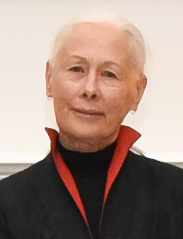Related Research Articles

Wellington is the capital city of New Zealand. It is located at the south-western tip of the North Island, between Cook Strait and the Remutaka Range. Wellington is the major population centre of the southern North Island, and is the administrative centre of the Wellington Region, which also includes the Kapiti Coast and the Wairarapa. It is the world's southernmost capital of a sovereign state. Wellington features a temperate maritime climate, and is the world's windiest city by average wind speed.

Dame Kiri Jeanette Claire Te Kanawa is a New Zealand opera singer. She had a full lyric soprano voice, which has been described as "mellow yet vibrant, warm, ample and unforced". Te Kanawa had three top 40 albums in Australia in the mid-1980s.
The Arts Council of New Zealand Toi Aotearoa is the national arts development agency of the New Zealand government, investing in artists and arts organisations, offering capability building programmes and developing markets and audiences for New Zealand arts domestically and internationally. Its funding consists of approximately 30% central government funding and the remaining amount from the Lotteries Commission. In 2014/15, the Arts Council invested a record $43.6 million in New Zealand arts and arts organisations.
Hereford Sixth Form College is a co-educational state funded sixth form college in Hereford, England.

The Royal Society Te Apārangi is an independent, statutory not-for-profit body in New Zealand providing funding and policy advice in the fields of sciences and the humanities.
Patch Theatre Company, formerly New Patch Theatre, is an Australian theatre company founded in 1972 and based in Adelaide, South Australia, which performs works for young children.

Waikato Museum is a regional museum located in Hamilton, New Zealand. The museum manages ArtsPost, a shop and gallery space for New Zealand art and design. Both are managed by the Hamilton City Council. Outside the museum is The Tongue of The Dog, a sculpture by Michael Parekowhai that has helped to increase visitor numbers. The sculpture was commissioned by MESH Sculpture Trust, Hamilton.
Wellington City Opera was a professional opera company based in Wellington, New Zealand. It originated in 1982 as the De La Tour Regional Opera Trust, and in 1999, 18 months after rebranding as The National Opera of Wellington, merged with Auckland-based Opera New Zealand to form New Zealand Opera.

Teddy Tahu Rhodes is a New Zealand operatic baritone.

Inia Morehu Tauhia Watene Iarahi Waihurihia Te Wiata was a New Zealand Māori bass-baritone opera singer, film actor, whakairo (carver) and artist.
Toi Māori Aotearoa is a charitable trust that promotes Māori traditional arts and Māori artists, both in New Zealand and overseas.
Frederick Turnovsky was a notable New Zealand manufacturer, entrepreneur, advocate for the arts and community leader. He was born in Prague, Bohemia in 1916.

Dame Robin Adair White is a New Zealand painter and printmaker, recognised as a key figure in the regionalist movement of 20th century New Zealand art.
Te Ohu Whakaari was a Māori theatre cooperative formed by Rangimoana Taylor in the early 1980s that created and performed plays across New Zealand Aotearoa.

Piri John Ngarangikaunuhia Sciascia was a New Zealand Māori leader, kapa haka exponent, and university administrator. From 2016 until his death, he served as kaumātua and advisor to the governor-general and government of New Zealand.
Taki Rua is a theatre organisation based in Wellington, Aotearoa / New Zealand that has produced many contemporary Māori theatre productions. Taki Rua has been going since 1983 and has had several name changes over that time including The New Depot, Depot Theatre and Taki Rua / The Depot. The full current name is Taki Rua Productions. Since inception the mission of Taki Rua has been to showcase work from Aotearoa. Because of this and the longevity of Taki Rua many significant New Zealand actors, directors, writers, designers and producers have part of the history including Riwia Brown, Nathaniel Lees, Rachel House and Taika Waititi.
Raymond Stanley Boyce was a British-New Zealand stage designer, costume designer and puppeteer and puppet designer. Boyce was part of the start professional theatre movement in New Zealand influencing the artistic landscape with his design knowledge. Boyce designed hundreds of theatre shows and was named an Arts Foundation of New Zealand Icon in 2007.
Michael Earl Parmenter is a New Zealand choreographer and dancer of contemporary dance.

William Newton Sheat was a New Zealand lawyer and arts advocate whose input was instrumental in many arts organisations including as a founding member of the New Zealand Film Commission, Creative New Zealand and Downstage Theatre.
The National Opera of New Zealand was a short-lived opera company based in Auckland, New Zealand, established with the support of the QE II Arts Council after the collapse of the New Zealand Opera Company in 1971. In 1982 it produced Kurt Weill's Rise and Fall of the City of Mahagonny and Benjamin Britten’s The Turn of the Screw. Both were artistically successful but financially insufficient for the company to continue. It was disbanded soon after.
References
- 1 2 3 4 Taylor 2014.
- ↑ Brusey 1973, p. 187.
Sources
- Brusey, Phyllis (1973). Ring Down the Curtain. Wellington: C. Rex Monigatti Publishing.
- Taylor, Lindis (22 October 2014). "Opera and musical theatre – New Zealand opera companies". Te Ara: The Encyclopedia of New Zealand . Retrieved 28 May 2021.